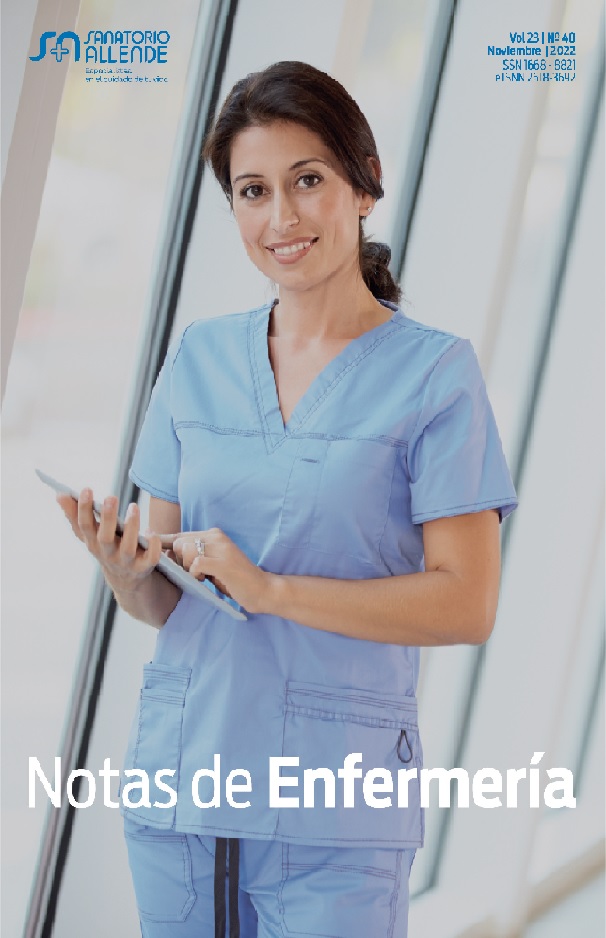Nursing care process for a safe return to schools post-covid-19
DOI:
https://doi.org/10.59843/2618-3692.v23.n40.39574Keywords:
Nursing Care Process, Community Health Nursing, COVID-19, School HealthAbstract
COVID-19 caused the closure of schools, moving activities to virtual environments for almost two years. Subsequently, governments give educational institutions plans for the safe return to school activities to improve a transition to face-to-face attendance for the school community and keep new cases of COVID-19 to a minimum. The nursing professional, through the Nursing Care Process (NCP), has the necessary tools and knowledge to operationalize these guidelines and implement them effectively in school communities. Objective: To facilitate a safe return to school activities in a primary school in Mexico. Methodology: A community case study with NCP, establishing the community of a primary school as a patient, for the assessment qualitative techniques and community participation were used and for the diagnostic process, results, and interventions the NANDA 2021-2023 taxonomy was used, Classification of NOC Results and classification of NIC Interventions. Results: Work was carried out around a diagnosis, a result, and two interventions on community participation in educational and health communication programs, as well as the reduction of risk behaviors for health in the community. Conclusions: The NCP made it possible to improve health-promoting behaviors around the use of face masks, healthy distance, and hand washing in the community. By considering the assessment of different actors, health communication materials were made as a technique to reinforce learned habits.
Downloads
References
1.Cifuentes J. Consecuencias en los Niños del Cierre de Escuelas por Covid-19: El Papel del Gobierno, Profesores y Padres. Revista Internacional de Educación para la Justicia Social. 2020 Marzo; 9(3e): p. 1-12.
2.Sánchez I. Impacto psicológico de la COVID-19 en niños y adolescentes. MEDISAN. 2021 Febrero; 25(1): p. 123-141.
3.Bolivar A. La escuela en un escenario postcovid: lo que hemos perdido, lo que podemos ganar. Innovaciones Proceso de atención de enfermería para un retorno seguro a las escuelas posterior al covid-19 -análisis de caso comunitario. Marco Esteban Morales Rojas, Didier Francisco Aké Canul,Sheila Mariela Cohuo Cob,Maricela Balam Gómez, Dallany Trinidad Tun González. Educativas. 2021 Diciembre; 23(35): p. 7-13.
4.Prestia A. The Moral Obligation of Nurse Leaders: COVID-19. Nurse Leader. 2020 Agosto; 18(4): p. 326-328.
5.Barrera R. Como evaluar el riesgo de los establecimientos educacionales en Chile, ante una posible reapertura, durante la pandemia de Covid-19. Tesis de Maestría. Santiago, Chile: Universidad del Desarrollo, Facultad de Ingeniería; 2020.
6.Gobierno del Estado de Yucatán. Protocolo para el regreso seguro a clases en el Estado de Yucatán. Protocolo Guía. Mérida, Yucatán: Secretaría de Educación, SEGEY; 2021. Report No.: V. 1.0.
7.Berasategi N. Las voces de los niños y de las niñas en situación de confinamiento por el COVID-19. Reporte Técnico. Bilbao: Universidad del País Vasco, CIP. Biblioteca Universitaria; 2020. Report No.: ISBN: 978-84-1319-229-1.
8.Alianza Internacional de Enfermeras Escolares. Plan estratégico de enfermería escolar para el retorno seguro a las aulas durante la pandemia por SARS-CoV-2. Documento técnico de consulta. Santiago, Chile: ALIANZA INTERNACIONAL DE ENFERMERAS ESCOLARES (Chile-España), Prensa; 2020. Report No.: AMECE 1.0.
9.Finset A, Bowsworth H, Butow P. Effective health communication – a key factor in pandemic. Patient Education and Counseling. 2020 Enero; 103(1): p. 873-876.
10.Kourkouta L, Papathanasiou I. Communication in Nursing Practice. Mater Sociomed. 2014 Febrero; 26(1): p. 65-67.
11.Parnell T, Stichler J, Barton A. A concept analysis of health literacy. Nurs Forum. 2019 Enero; 54(1): p. 315-327.
12.Teoli A, Scarparo F, Vargas L. New Coronavirus: (Re)thinking the care process in Primary Health and Nursing. Revista Brasileira de Enfermagem. 2020; 73(2): p. 1-5.
13.Herman H, Kamitsuru S. NANDA Diagnósticos Enfermeros. Definiciones y Clasificación 2021-2023. 12th ed. Madrid: Elsevier ES; 2021.
14.Moorhead S, Swanson E, Johnson M, Maas M. Clasificación de Resultados de Enfermería (NOC). Sexta ed. España: Elsevier; 2018.
15.Butcher H, Bulechek G, Dochterman J, Wagner C. Clasificación de Resultados de Enfermería (NIC). Séptima ed. España: Elsevier; 2018.
16.Cernich A, Lee S, Bianchi D. Building the Evidence for Safe Return to School During the COVID-19 Pandemic. Pediatrics. 2022 Febrero; 149(2): p. 1-2.
17.Rivas E, López J, Cicero A. Intervención educativa para la prevención de la COVID-19 en el ámbito de la Educación Infantil y Primaria de Cantabria. Parainfo Digital. 2020 Noviembre; 14(32): p. 1-3.
18.COVID-19 y regreso a clases: Gasto de inversión en infraestructura sanitaria. [Online].; 2021 [cited 2022 abril 08. Available from: https://bit.ly/3xKLIKE.
19.Maughan E, Johnson K, Gryfinski J. Show me the evidencie: COVID-19 and School Nursing in the 21st Century. NASN School Nurse. 2020 Diciembre; 36(1): p. 47-51.
Downloads
Published
Issue
Section
License
Copyright (c) 2022 Sanatorio Allende

This work is licensed under a Creative Commons Attribution-NonCommercial 4.0 International License.
Those authors who have published with this journal, accept the following terms:
- Attribution — You must give appropriate credit, provide a link to the license, and indicate if changes were made. You may do so in any reasonable manner, but not in any way that suggests the licensor endorses you or your use.
- NonCommercial — You may not use the material for commercial purposes.

